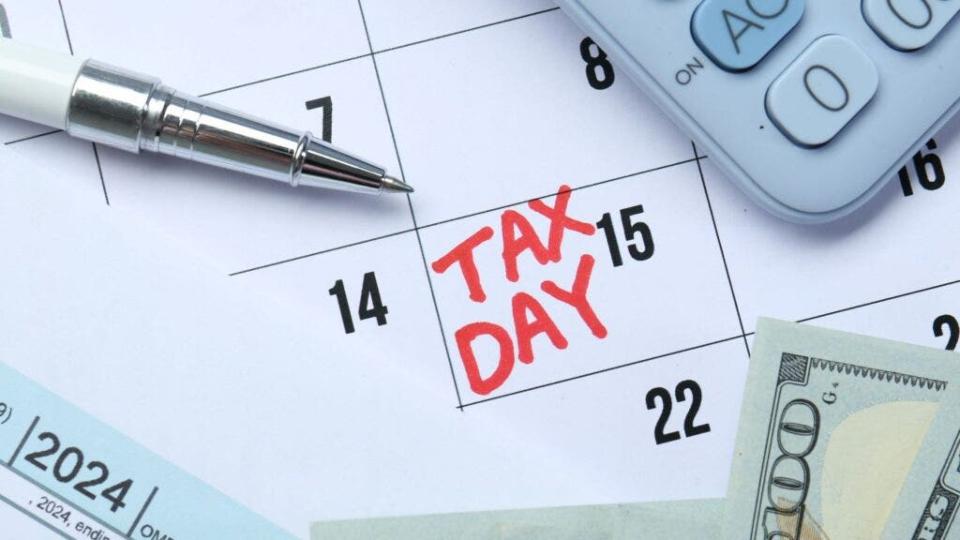.
How did the stock market perform before tax day? Data shows 'poor' initial performance

There are countless interesting facts about Tax Day.
According to the Internal Revenue Service (IRS):
-
During the quarter, tax collectors answered more than one million taxpayer calls.
-
As of April 6, they processed over 100 million individual tax returns.
-
Tens of millions more will file their taxes before the April 15 deadline.
-
About 19 million taxpayers will apply for extensions before the Oct. 15 deadline.
-
The amount of tax rebates has exceeded US$200 billion.
-
The average tax refund was $3,011, an increase of 4.61 TP3T from last April's average refund of $2,878.
These numbers change from year to year, but there's at least one tax day trend that is almost uniform: stock market volatility.
The first few weeks of April are typically "tougher," Bankrate said, citing data from the Kensho division of Standard & Poor's Global.
Many taxpayers liquidate stocks or use money market funds to meet immediate cash needs.
And from 2000 through 2016, the S&P 500 fell an average of 0.2% in the two weeks before tax day.
After tax day, it's a different story. The S&P 500 usually bounces back, ending April with an average gain of about 1.7% (Bankrate notes that it climbs "spectacularly" for all of 75%).
According to Money.com, from 1998 through 2022 (19 out of 25 years), the S&P 500 has gained an average of 0.83% in the week following the tax deadline, and the median one-week gain for the year is 0.31%.
In April, the overall market impact was minimal. Investors would be wise to stick to their long-term investment strategy and prioritize contributions to tax-advantaged retirement accounts (i.e., 401k plans and IRAs).
Historically, the S&P 500 has returned approximately 10% annually, and our goal is to invest for the long term rather than try to time the market.
Financial advisors typically recommend that clients invest in the S&P 500 Index Fund (see below), always focusing on long-term future outcomes rather than short-term fluctuations.
-
S&P 500 Index Fund (NYSE:spy)
-
iShares Core S&P 500 ETF (NYSE:IVV)
-
Pioneer S&P 500 ETF (NYSE:VOO)
-
iShares S&P 500 Growth ETF (NYSE:IVW)
-
Invesco S&P 500 Equal Weight ETF (NYSE:RSP)
Artefacts of mass production from Yardeni ResearchEd YardeniIt is predicted that the S&P 500 could soar 26% to 6,500 by 2026.
"I think it's a long-term bull market," the economist told CNBC in March. "I still think it's going to hit 5,400 by the end of the year, which was a bold prediction a year ago, but it seems to be pretty conservative now, so why not go higher?
Now Read: March Retail Sales Growth Beats Expectations, Signaling Strong Consumer Spending
Photo Shutter
"The Secret Weapon of Active Investors" - Power up your stock market game with the #1 "News and Everything Else" trading tool: Benzinga Pro - Click here to start a 14-day trial!
Get the latest stock analysis from Benzinga?
-
Apple (AAPL) : Free Stock Analysis Report
-
TESLA (TSLA) : Free Stock Analysis Report Free Stock Analysis Report
This article, "How Did The Stock Market Do Before Tax Day? Data Suggests 'Awful' Start To Performance was originally published on benzinga.com
© 2024 Benzinga.com. Benzinga does not provide investment advice. Press Release: Press Release: Press Release: Press Release: Press Release: Press Release: Press Release: Press Release: Press Release: Press Release.